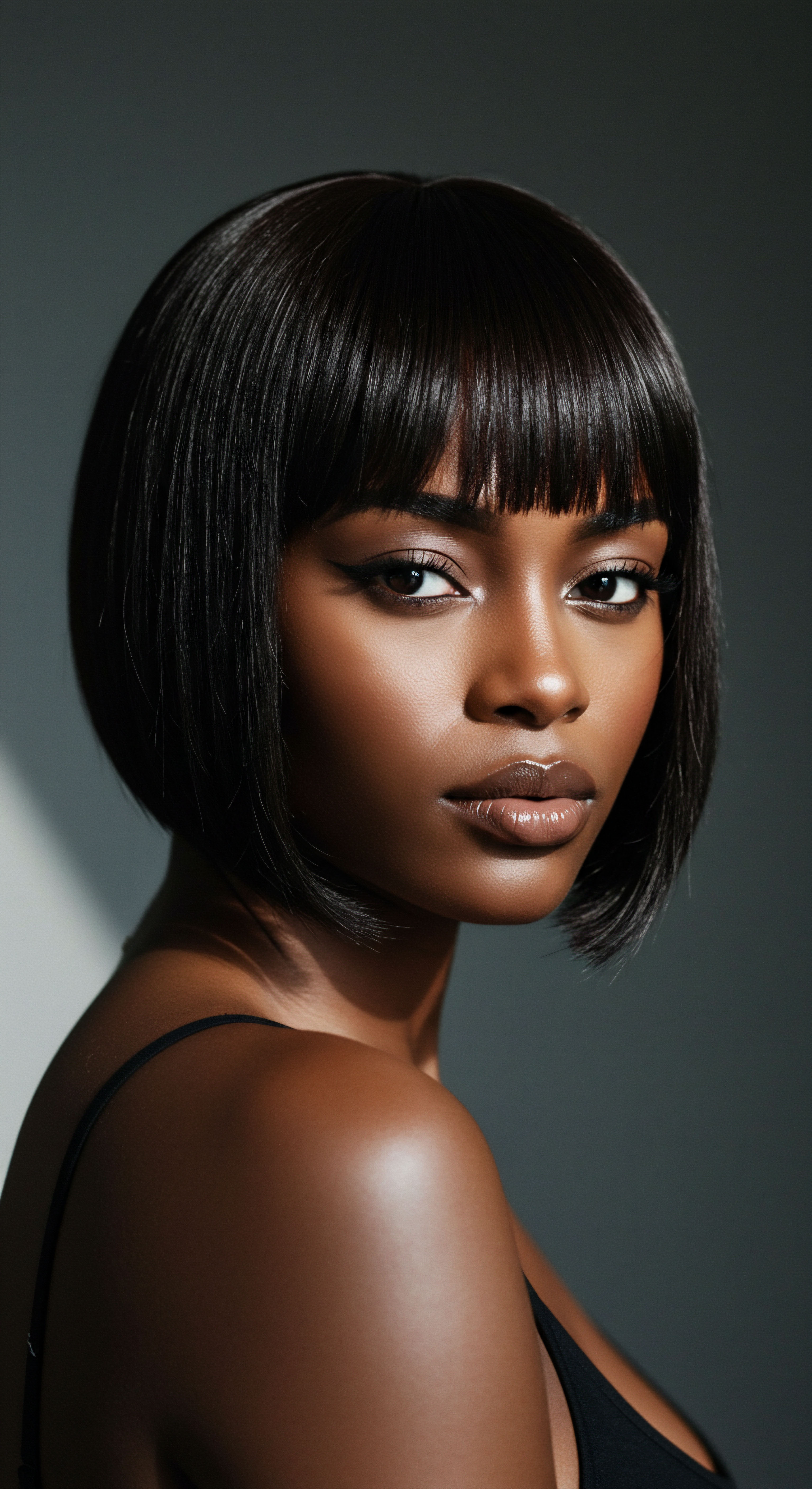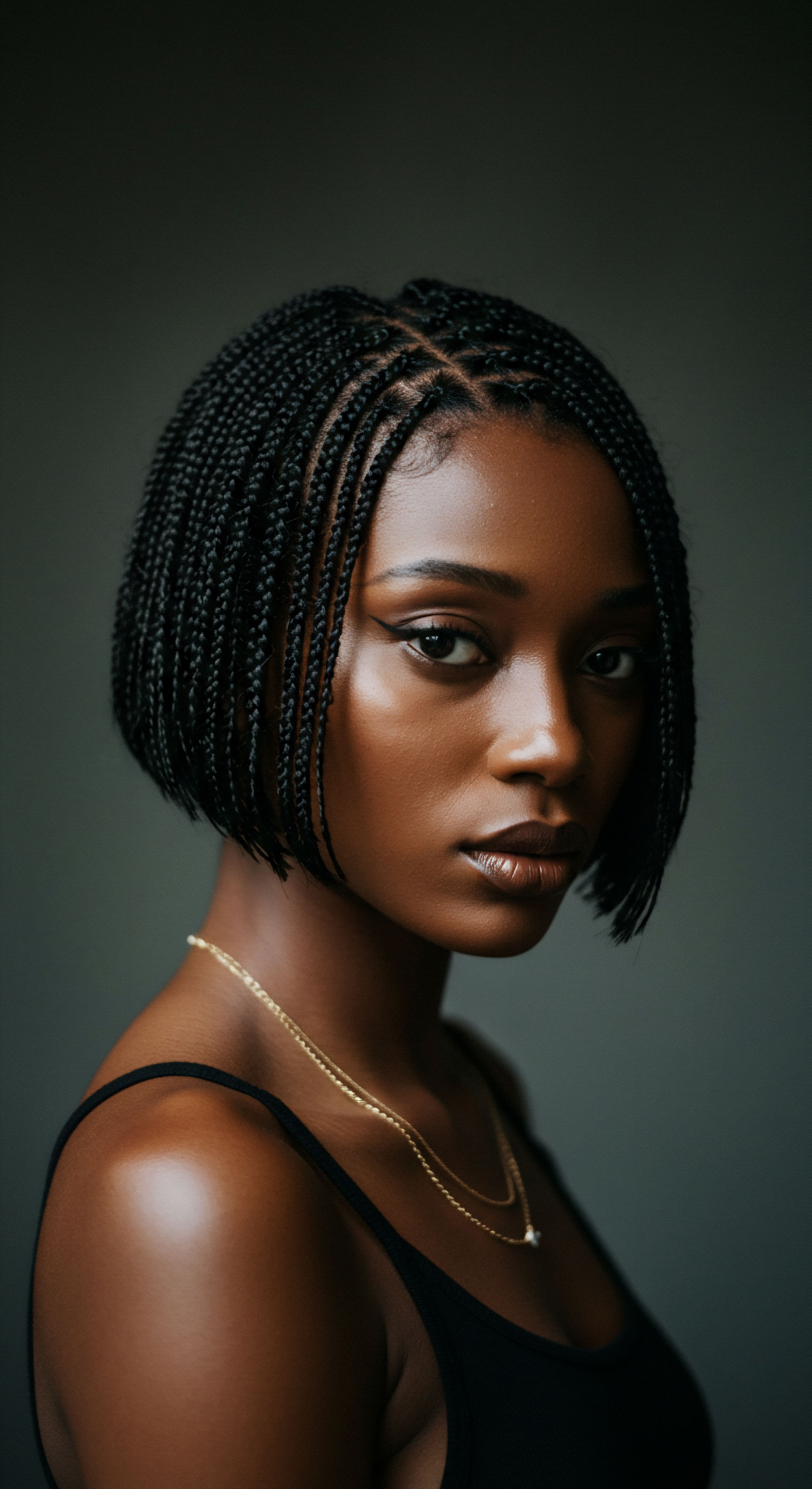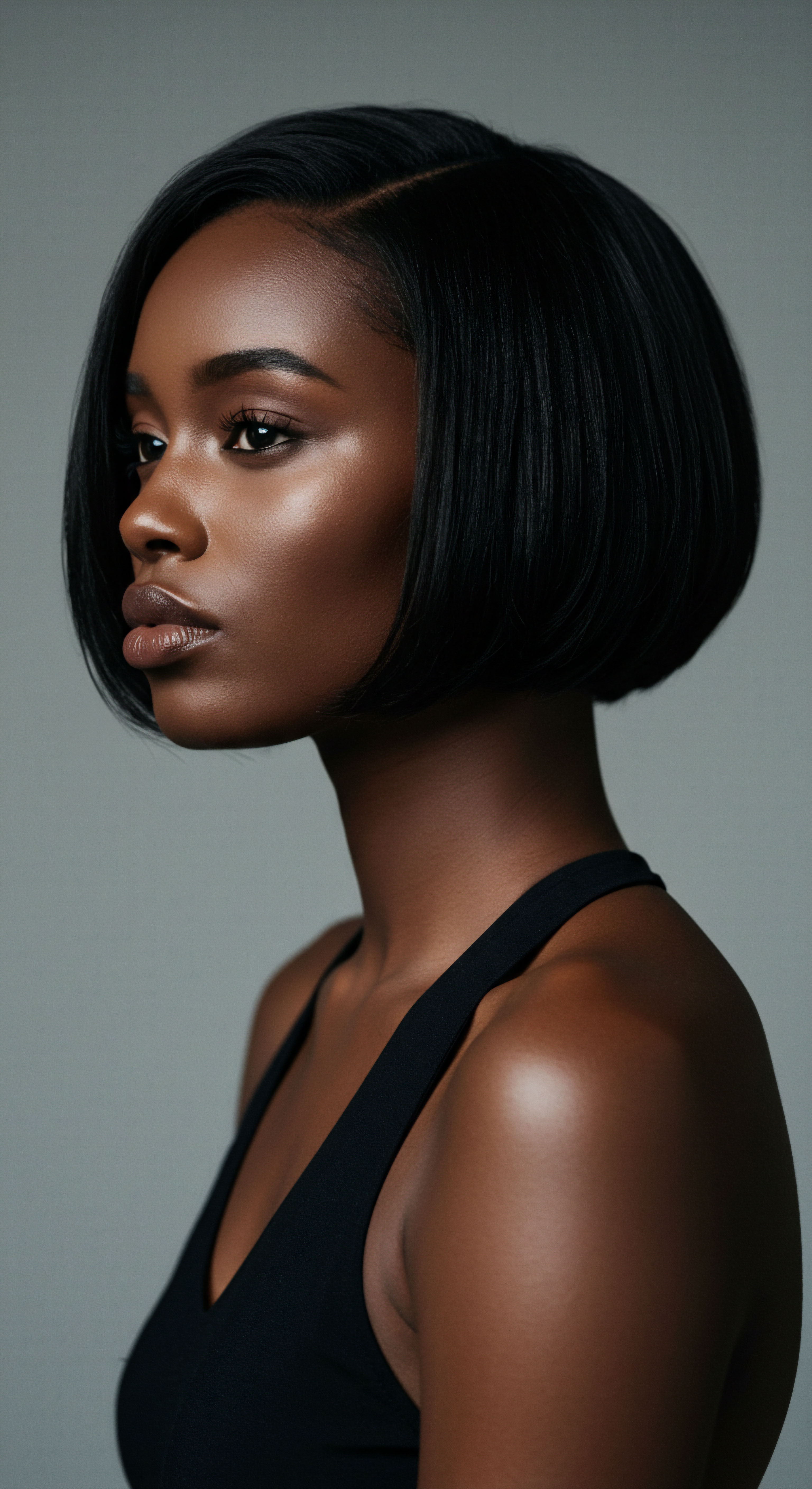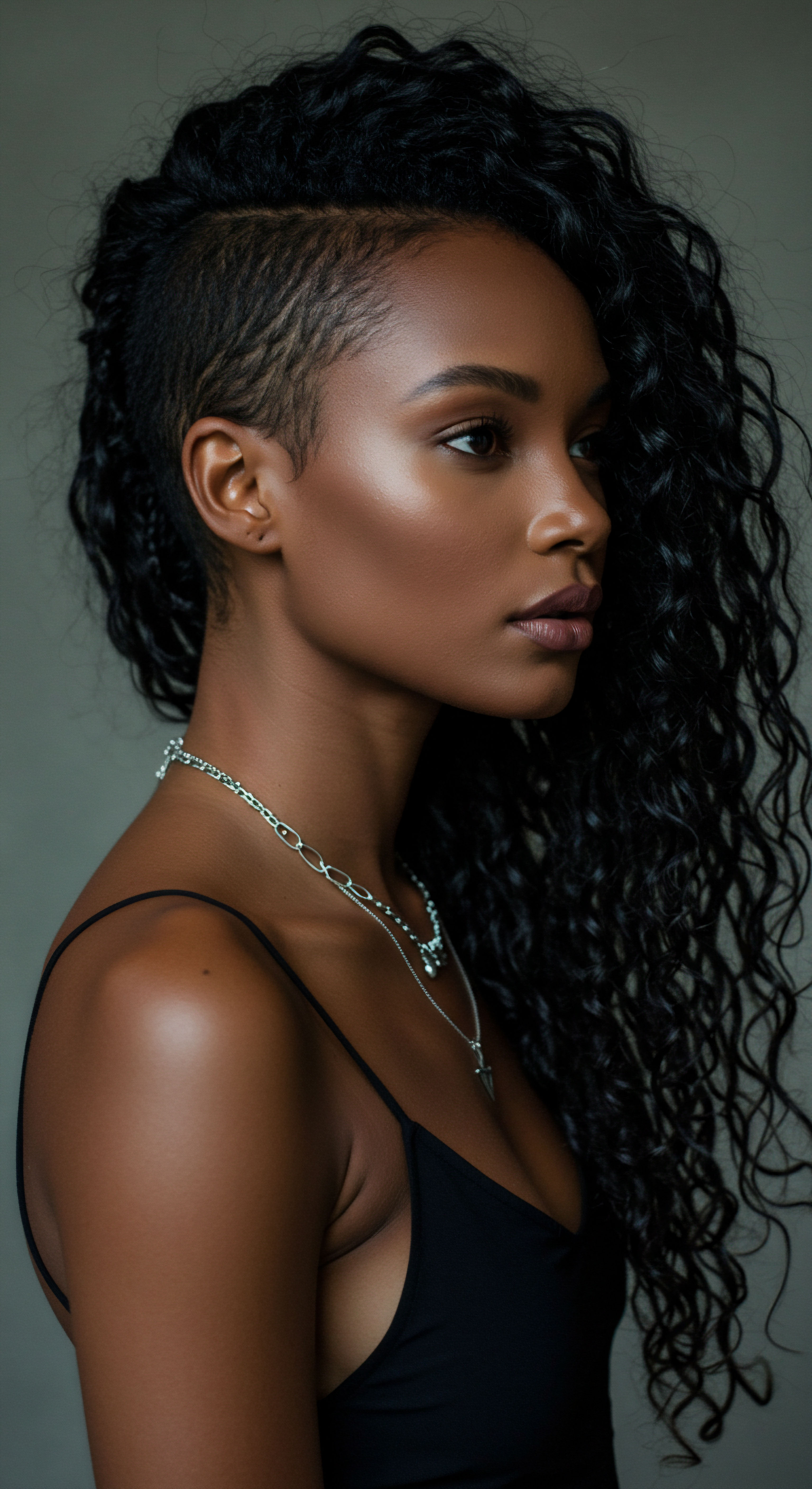
Roots
Consider for a moment the gentle hum of a space where transformations begin, not merely of appearance, but of spirit. This is the quiet invitation extended by the hair salon, a place far deeper than its mirrored surfaces suggest. It is a sanctuary where strands are tended, yes, but where something more profound often takes root ❉ a sense of belonging, a quiet renewal of self, and the soft strengthening of communal bonds.
Before the first snip or the tender application of a conditioner, there lies a history, a foundational understanding of human connection that positions these establishments as something quite special within our shared world. They are not just points of transaction; they are sites where the personal and the collective subtly intermingle, creating a bedrock for well-being that resonates through individual lives and across neighborhoods.
For generations, particularly within communities rich with textured hair traditions, the act of hair care has transcended simple grooming. It has been a practice steeped in cultural meaning, a passage of knowledge, and a gathering of spirits. These spaces, whether formal salons or informal kitchen sessions, have always been centers of shared life.
They speak to an ancient human need for connection, for touch, for stories told in hushed tones or with joyous laughter. The very act of entrusting one’s crown to another fosters a unique intimacy, dissolving the usual barriers that divide individuals in the bustling rhythm of daily existence.

The Sacred Space of Hair Care
Every strand holds a story, a memory, a piece of one’s heritage. For those with textured hair, this connection runs particularly deep, linking personal identity to ancestral practices and communal aesthetics. The salon, then, becomes a modern extension of this historical continuity, a place where these stories continue to be spun and shared. It is here that techniques passed down through families meet contemporary science, creating a living archive of care and style.
The atmosphere often encourages an unhurried pace, allowing for genuine conversation to unfold, for advice to be exchanged, and for silent understanding to bloom. This is the essence of what makes a salon more than a business; it becomes a repository of communal memory and aspiration.
Hair salons serve as unexpected cradles of community, where personal care intertwines with collective well-being.
The tactile nature of hair care, the hands working through coils and curls, the gentle scalp massage, all contribute to a sensory experience that calms the nervous system and opens avenues for communication. This physical closeness, often absent in other commercial settings, cultivates a rare level of trust. Clients often reveal anxieties, joys, and challenges to their stylists, knowing that these confidences are held within a discreet and understanding space. This informal therapeutic exchange is a quiet, yet powerful, aspect of the salon experience, supporting emotional health in ways that are both subtle and profound.

A Legacy of Gathering
The concept of a salon as a gathering place is not new; it mirrors ancient traditions where personal adornment was intertwined with social ritual. Consider the historical significance of communal hair braiding sessions in various African cultures, where intricate patterns were created not just for beauty, but as symbols of status, age, and tribal affiliation. These sessions were moments of collective artistry and shared narratives.
The modern salon carries echoes of these traditions, albeit in a different form. It provides a contemporary stage for the continuation of these social functions, offering a consistent point of contact and mutual support in an increasingly disconnected world.
- Hair Traditions ❉ Many cultures view hair care as a communal act, linking it to shared heritage.
- Social Connection ❉ Salons provide a consistent venue for regular social interaction, fostering familiarity.
- Emotional Outlet ❉ The trusting bond with a stylist creates a safe space for personal disclosure.
The architecture of the salon itself, with its rows of chairs facing mirrors, encourages observation and interaction. One sees not only their own reflection but also the reflections of others, engaged in their own transformations. This shared vulnerability, this collective act of self-presentation, builds a quiet camaraderie. The sounds of clippers, the scent of products, the murmur of voices – these elements combine to form a sensory landscape that is both comforting and familiar, reinforcing the salon’s identity as a comforting, grounding presence in the lives of its patrons.
| Historical Context Ancient African Braiding Circles |
| Primary Function Skill transfer, social bonding, cultural expression |
| Well-Being Aspect Collective identity, emotional support |
| Historical Context 18th Century European Salons |
| Primary Function Socializing, intellectual discourse, fashion trends |
| Well-Being Aspect Social cohesion, intellectual stimulation |
| Historical Context Early 20th Century Black Hair Salons |
| Primary Function Economic independence, political organizing, community building |
| Well-Being Aspect Empowerment, solidarity |
| Historical Context Contemporary Hair Salons |
| Primary Function Personal grooming, social interaction, informal support |
| Well-Being Aspect Mental relief, belonging, information sharing |
| Historical Context These spaces consistently provided more than aesthetic services across different eras and cultures. |

Ritual
Imagine the rhythmic snip of shears, the soft whoosh of the blow dryer, the fragrant mist of a styling product. These are the sensory markers of a salon visit, moments that transcend simple appointments to become something more significant ❉ a ritual. This section turns its gaze to the repeated, purposeful actions that define our time in these spaces, transforming them from mere service providers into deeply personal and collective well-being practices.
It is within these routines that we discover layers of practical wisdom and actionable understanding, guiding us toward a more serene and self-aware existence. The salon ritual, particularly for those with textured hair, is a powerful affirmation of identity and a steady beat in the symphony of self-care.
A visit to the hair salon is often a deliberate pause in the rush of life, a scheduled moment for self-attention. This conscious allocation of time signals a commitment to personal well-being. For many, it is a journey into self-acceptance, a step towards celebrating the unique qualities of their textured hair.
The meticulous care involved in washing, conditioning, detangling, and styling becomes a mindful practice, allowing individuals to reconnect with their physical selves. This physical engagement, guided by the expert hands of a stylist, can quiet the mind and alleviate daily stressors, creating a space for inner calm.

The Craft of Connection
The stylist, in this context, is not merely a technician but a guide, a gentle hand in a process that is both art and science. They interpret the needs of the hair, selecting appropriate techniques and products, but they also read the unspoken cues of their client. This intuitive understanding deepens the bond, making the ritual truly personal.
Whether it is a protective style designed to safeguard delicate strands, or a natural definition technique that accentuates inherent curl patterns, each choice is part of a larger conversation about health, beauty, and personal expression. The stylist’s expertise provides a sense of security, allowing clients to surrender to the process and emerge feeling refreshed and confident.
The salon ritual is a mindful practice, where expert care cultivates inner calm and outward confidence.
Consider the artistry involved in crafting a protective style, such as braids or twists. This process, often lengthy, becomes a shared experience, a quiet collaboration between client and stylist. The repetitive motions, the careful sectioning, the rhythmic weaving of hair, all contribute to a meditative atmosphere.
During these hours, conversations flow freely, covering everything from daily musings to deeper reflections on life. This sustained interaction allows for the development of genuine relationships, where the stylist often becomes a trusted confidante, privy to the intimate details of their clients’ lives.

Styling as a Form of Self-Affirmation
For individuals with textured hair, the styling process is often deeply intertwined with self-acceptance and cultural pride. Learning to care for and style natural curls, coils, and waves can be a journey of discovery, challenging societal norms and embracing inherent beauty. Salons specializing in textured hair become places of education and empowerment, where clients gain knowledge about their hair’s unique properties and how to nurture it.
This understanding extends beyond aesthetics, touching upon self-perception and the celebration of one’s heritage. The tools and techniques employed, from wide-tooth combs to specific twisting methods, are not just practical implements; they are instruments of self-expression and cultural continuity.
- Personalized Care ❉ Stylists adapt techniques to individual hair needs, building trust.
- Skill Transfer ❉ Clients learn about hair care and styling from experienced professionals.
- Identity Affirmation ❉ Salon visits reinforce self-acceptance and cultural pride through hair.
The gentle application of heat for thermal reconditioning, when done with a safety-first approach, or the careful setting of natural curls, are all part of this ritual. Each step is designed to enhance the hair’s health and appearance, contributing to the client’s overall sense of well-being. The conversations during these processes, often about product choices, home care routines, or simply life’s small joys, strengthen the social bonds that make these spaces so vital. The salon becomes a quiet haven where the practical aspects of hair care merge with the profound need for human connection and gentle self-attention.
| Ritual Component Consultation and Planning |
| Practical Application Discussing hair goals, assessing hair health |
| Well-Being Outcome Feeling heard, personalized approach |
| Ritual Component Cleansing and Conditioning |
| Practical Application Scalp massage, product application |
| Well-Being Outcome Physical relaxation, sensory pleasure |
| Ritual Component Styling and Finishing |
| Practical Application Careful technique, aesthetic transformation |
| Well-Being Outcome Confidence boost, self-expression |
| Ritual Component Conversational Exchange |
| Practical Application Sharing stories, advice, laughter |
| Well-Being Outcome Social connection, emotional release |
| Ritual Component Each step contributes to a holistic sense of renewal and community strengthening. |

Relay
How do the intimate exchanges within a salon ripple outward, touching the wider fabric of a community’s well-being? This question guides us into the most intricate dimensions of the salon’s role, moving beyond individual transformations to consider their collective, societal impact. Here, the soft murmur of conversation transforms into a conduit for vital information, and the trust between stylist and client becomes a powerful instrument for public good.
This section delves into the multifaceted ways hair salons, particularly those serving textured hair communities, act as vital social infrastructure, often addressing needs that formal systems overlook. We will discover how these spaces function as crucial relay points for health, social support, and cultural continuity, grounded in a deep understanding of community dynamics and backed by compelling data.
The unique position of hair salons, as places of consistent, personal interaction, makes them natural settings for the dissemination of information and the provision of informal support. Unlike clinical environments, salons possess an inherent comfort and familiarity, dissolving the apprehension that might otherwise hinder sensitive conversations. This established trust creates a fertile ground for initiatives that extend beyond aesthetics, venturing into areas of public health and social welfare.

Can Salons Bridge Gaps in Community Health Care?
Indeed, they can. A compelling illustration of this capacity is found in the success of health interventions conducted within these spaces. For instance, the Black Barbershop Health Outreach Program (BBHOP), a grassroots initiative, has demonstrated remarkable success in addressing health disparities among African American men. This program, operating in barbershops across multiple states, has screened over 7,000 men for hypertension and diabetes, facilitating referrals to medical care.
The program’s effectiveness stems directly from the established trust and regular contact between barbers and their clients, transforming a routine haircut into a moment for life-saving health awareness. This particular model leverages the barber as a respected community figure, a natural point of contact for health education in a setting that feels safe and familiar, rather than clinical or intimidating. The data from this program highlights a powerful truth ❉ well-being extends beyond the confines of traditional healthcare institutions and can be profoundly influenced by trusted community spaces.
Salons can serve as powerful informal health outposts, leveraging existing trust to address community health disparities.
This model is not limited to barbershops; similar approaches have found traction in beauty salons. Studies indicate that hairstylists often become informal confidantes for their clients, listening to personal problems that range from daily stressors to more serious emotional challenges. Research has shown that clients frequently raise personal and emotional problems with their hairdressers during appointments, with 43% of problem types discussed comprising moderate to severe concerns.
This highlights the latent capacity of stylists to act as informal helpers, offering a listening ear and sometimes, a crucial first point of contact for those grappling with mental health struggles. The casual, non-judgmental atmosphere of the salon provides a safe space for such disclosures, which might not occur in more formal settings.

How Do Salons Support Mental Well-Being Beyond Conversation?
Beyond being a space for emotional venting, salons contribute to mental well-being by fostering social cohesion and reducing isolation. In an increasingly fragmented world, these establishments offer a consistent point of contact and belonging. For many, especially older adults or those facing chronic illnesses, salon visits represent a significant social outing, providing human interaction and a sense of routine.
A study examining Japanese hair salons, for example, found that health-related conversations constituted 27.6% of all interactions, with hairstylists showing genuine interest in clients’ health concerns and sometimes referring them to professionals. This consistent engagement mitigates feelings of loneliness and strengthens social networks, which are critical determinants of overall health.
The salon also serves as a hub for cultural exchange and identity affirmation, particularly for textured hair communities. It is a place where shared heritage is celebrated, where intergenerational knowledge about hair care is passed down, and where a collective identity is reinforced. This cultural anchoring contributes significantly to psychological well-being, fostering a sense of pride and belonging. The very act of maintaining and styling textured hair is often an act of self-love and cultural connection, and the salon provides the supportive environment for this expression.
- Health Advocacy ❉ Salons facilitate public health interventions by utilizing existing client-stylist trust.
- Social Connectivity ❉ They provide regular social interaction, combating isolation and building community ties.
- Cultural Preservation ❉ Salons act as centers for sharing hair traditions and reinforcing cultural identity.
However, the expanded role of salons also brings its own complexities. Stylists, while often willing to provide support, may lack formal training in health advocacy or mental health first aid. This raises a point for consideration ❉ how can these informal health advocates be better supported and equipped? Initiatives that offer training to stylists in areas like mental health awareness or basic health screening protocols can significantly amplify their positive impact, transforming their natural inclination to help into a structured, effective contribution to public health.
The conversation about well-being in salons extends to the stylists themselves, acknowledging the physical demands and potential exposure to airborne chemicals that some salon environments present, as noted in studies examining the occupational health of stylists serving Black and Latina clients. Addressing these systemic concerns ensures that the well-being circle is complete, encompassing both client and practitioner.
| Role Informal Health Hub |
| Impact on Community Increased health awareness, early detection of conditions |
| Supporting Data/Observation BBHOP screening success for hypertension/diabetes |
| Role Mental Support Space |
| Impact on Community Reduced feelings of isolation, emotional release |
| Supporting Data/Observation Clients confiding personal problems to stylists (43% moderate-severe) |
| Role Social Cohesion Catalyst |
| Impact on Community Strengthened community bonds, shared experiences |
| Supporting Data/Observation Salons as "third places" and sites of social interaction |
| Role Cultural Sanctuary |
| Impact on Community Reinforcement of identity, intergenerational learning |
| Supporting Data/Observation Historical role of Black hair salons in community building |
| Role Salons are dynamic spaces with profound, multifaceted contributions to collective well-being. |

Reflection
The journey through the quiet dignity of the hair salon reveals a truth often overlooked ❉ these spaces are far more than venues for aesthetic adjustments. They are vital, pulsating centers of human connection, places where the tangible act of caring for one’s hair gracefully intertwines with the intangible nourishment of the spirit. From the deepest roots of cultural tradition to the delicate daily rituals, and onward to their broader role as community anchors, salons consistently affirm their unique capacity to foster holistic well-being.
They stand as enduring testaments to the power of human touch, shared stories, and the quiet strength found in communal gathering. The salon, in its gentle rhythm, reminds us that true well-being is not a solitary pursuit, but a shared experience, woven into the very fabric of our lives.

References
- Thomas, S. B. & Quinn, S. C. (2007). Community-based participatory research with African American communities. In S. S. Minkler & N. Wallerstein (Eds.), Community-based participatory research for health ❉ From process to outcomes (pp. 209-228). Jossey-Bass.
- Victor, R. G. et al. (2018). A Cluster-Randomized Trial of Blood Pressure Reduction in Black Barbershops. The New England Journal of Medicine, 378(14), 1291-1301.
- Oldenburg, R. (1999). The Great Good Place ❉ Cafes, Coffee Shops, Bookstores, Bars, Hair Salons, and Other Hangouts at the Heart of a Community. Marlowe & Company.
- Linnan, L. A. D’Angelo, L. M. & Harrington, C. B. (2014). A literature synthesis of health promotion research in salons and barbershops. Health Promotion Practice, 15(6), 785-797.
- Mbilishaka, A. (2018). PsychoHairapy ❉ The Role of Hair in Mental Health. Journal of Black Psychology, 44(8), 659-680.
- Ansong-dePass, A. (2022). A Cut Above the Rest ❉ A Qualitative Study to Evaluate the Feasibility of Implementing Early Childhood Mental Health Intervention. Journal of Health Disparities Research and Practice, 15(3), 19-35.
- Palmer, J. et al. (2021). Usual prevention in unusual settings ❉ A scoping review of place-based health interventions in public-facing businesses. PLOS One, 16(12), e0260410.
- Quirós-Alcalá, L. et al. (2025). Indoor Air Concentrations of Volatile Organic Compounds in U.S. Hair Salons Serving Black and Latina Clients. Journal of Environmental Exposure Assessment, (Forthcoming).
- O’Sullivan, J. & Ward, S. (2021). Why hair salons and barbers are socially relevant. Maynooth University Department of Sociology Research Briefs.
- Kaya, A. & Uslu, Y. (2018). Hairdressers’ Preparedness to Be Informal Helpers for Their Clients. Journal of Counseling & Development, 96(3), 324-332.